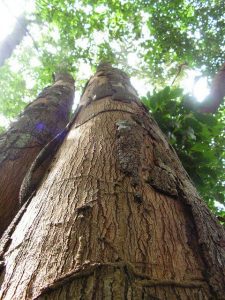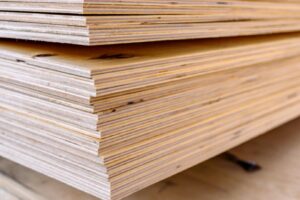
Virola is a newer type of wood used in plywood. Unlike most woods, it is commonly sold under its scientific name rather than a traditional common name. It is also known as Ucuuba, Sebo, Dalli, Cumala, Cajuea, and other regional names. Native to Brazil, the Virola tree is often seen as low-value because it naturally falls and decomposes in swampy areas if not harvested.
Applications and Uses of Virola Plywood
Virola plywood is a budget-friendly option similar to Luan or Mahogany plywood, making it a popular choice for various woodworking projects. It is commonly used for drawer bottoms, cabinet backs, and furniture frames. Additionally, it serves as a reliable floor underlayment, offering a smooth, fine-grained surface.
When varnished, Virola plywood resembles Mahogany and is sometimes marketed as such, particularly in Mexico’s furniture industry. Since the difference between the two is subtle, many buyers may be unable to distinguish between them, making Virola an attractive alternative.
Popularity of Virola Plywood
Virola plywood is rarely used in the United States for visible finishes, mainly for hidden parts like drawer bottoms and cabinet backs. This is more about style preference than quality—Mahogany, which Virola resembles, has fallen out of favor in U.S. furniture trends. However, in Mexico, where Mahogany remains popular, Virola plywood is widely used in furniture making.
Cutting and Finishing Virola Plywood
Virola plywood maintains good quality despite being affordable. It has minimal voids and a smooth veneer surface. Its durability makes it suitable for marine applications, especially as a structural base beneath fiberglass panels. However, it must be sealed with fiberglass resin to prevent damage.
Cutting Virola plywood can be tricky, as its fine grain tends to splinter when crosscut. To avoid this, scoring the surface veneer with a utility knife before cutting ensures clean, chip-free edges. Additionally, Virola is vulnerable to fungi and dry wood borers, so proper sealing with paint or varnish is essential for long-term protection.
Virola does not absorb excessive varnish like open-grained woods such as oak when finishing. However, it can develop a slight “fuzz” on the surface. Sanding between coats is necessary to remove this texture and achieve a smooth, polished finish. Once thoroughly dried, the fuzz does not return, leaving a clean and durable surface.
Additional Insights on Virola Plywood
Virola plywood is valued for its smooth surface and affordability, making it a practical choice for various woodworking projects. While it is not as widely recognized as other plywood types, its durability and fine grain make it a reliable option for structural and aesthetic uses.
One key advantage of Virola plywood is its lightweight nature, which makes it easier to handle and install than denser hardwoods. This is especially useful for DIY projects and furniture assembly. However, proper sealing is essential to extend its lifespan because it is more susceptible to moisture and pests.
For those looking to enhance the wood’s appearance, staining can bring out its natural color, though multiple coats may be needed for a richer tone. Additionally, using sharp tools and the proper cutting techniques will help minimize splintering and achieve precise cuts.
Virola plywood offers a budget-friendly alternative for furniture, cabinetry, and marine applications, as long as it is properly treated and maintained.
Handpicked by our Expert for Virola Plywood Projects:
1. Virola Plywood Sheets
- It offers various sizes and thicknesses for DIYers, woodworkers, and professionals.
- Bundle options for bulk buyers or small project needs.
2. Woodworking & Finishing Supplies
- Wood Sealers & Varnishes – Essential for protecting Virola plywood from moisture and pests.
- Stains & Wood Finishes – Enhances Virola’s natural appearance while adding durability.
- Sandpaper & Sanding Blocks help smooth the surface, especially between finish coats.
3. Cutting & Assembly Tools
- Fine-Tooth Saws & Utility Knives – Reduce splintering when cutting Virola plywood.
- Clamps & Woodworking Jigs – Ensure precise cuts and assembly.
- High-Quality Wood Glue – Ideal for securing plywood joints.
4. Marine Application Supplies
- Fiberglass Resin & Epoxy – Essential for sealing Virola plywood in marine projects.
- Waterproof Wood Primers & Paints – Protects against moisture damage.
5. Furniture & Cabinet Hardware
- Drawer Slides & Hinges – Complements Virola plywood for cabinetry and furniture projects.
- Decorative Edge Banding – Gives plywood edges a polished, professional look.
6. DIY Project Kits
- Tiny Virola Plywood Craft Kits – Pre-cut pieces for beginner-friendly projects like shelves, organizers, or decorative panels.
- Customizable Furniture Kits – Flat-pack furniture using Virola plywood, marketed as easy-to-assemble and budget-friendly.




